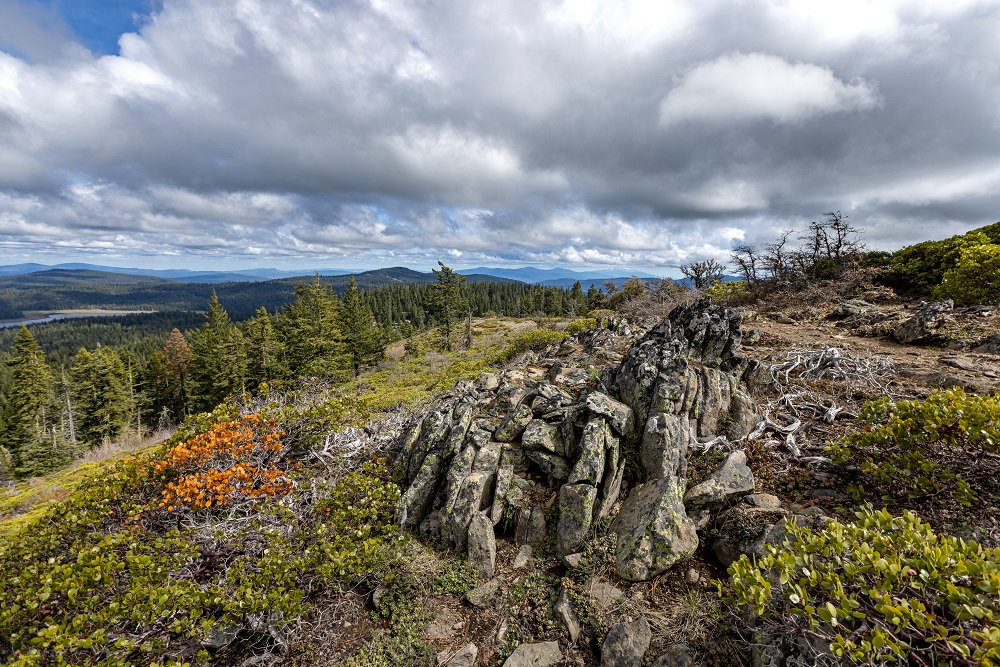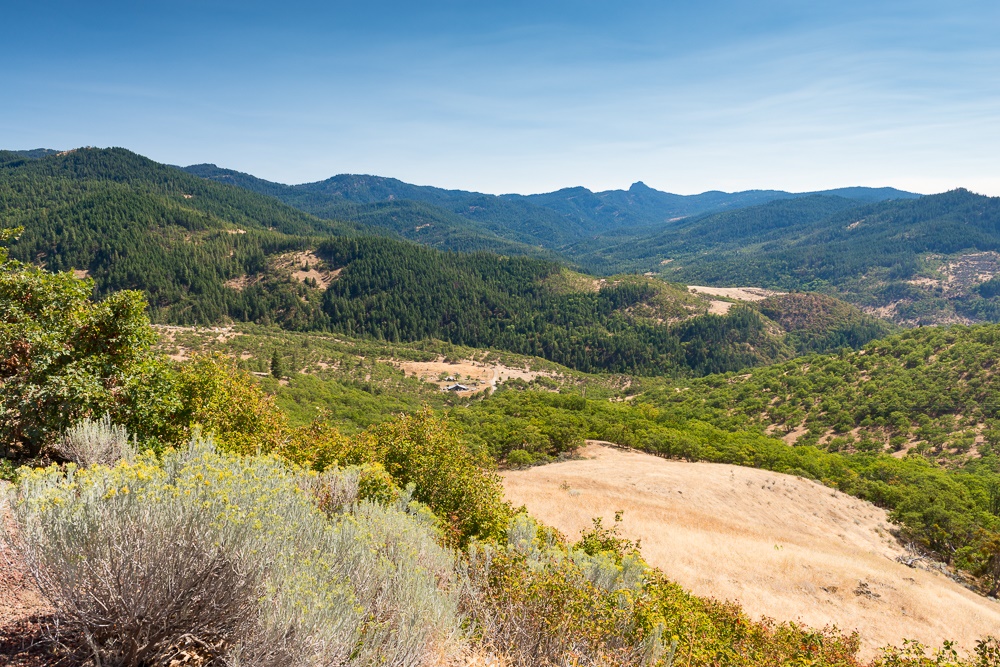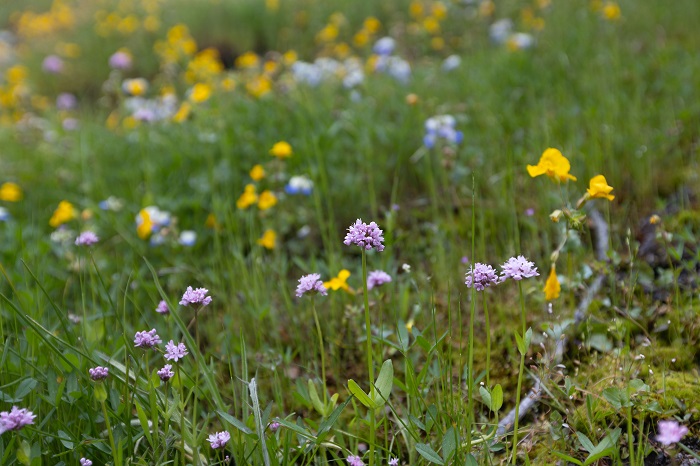Seasonal Migration
Many tribes’ traditional lands have also converged in the mountainous lands now managed as part of the Cascade-Siskiyou National Monument, near the crest of Oregon’s southern Cascade Range. Shastas, Takelmas and Klamaths have considered parts of the Monument home, though the lands also sit within close proximity to other tribes of the Rogue and Klamath Basins who often visited this part of the Cascade crest. For most, this was a place visited seasonally. As these mountains are much cooler than the lowlands, people living in the valleys traditionally ascended into the mountains as snow retreated and summer approached; in lands now managed as part of Cascade-Siskiyou, families held seasonal camps and relied on the many mountain streams for water. (Only much later would some of these streams be dammed, creating present-day reservoirs.) These communities knew when to begin their annual ascent into the mountains by observing the seasonal choreographies of plants, animals, and even insects in the lowlands, and by tracking the snowline’s gradual ascent up to the mountaintops. They traveled along major trails, linking various places in the mountains with the large lowland settlements of the Bear Creek Valley (modern Ashland-Medford), the middle Klamath River of California, and the upper Klamath Basin near modern-day Klamath Falls. As they traveled in these mountains, they encountered special sites visited for social but also ceremonial purposes, their significance elevated further by occasional views of distant peaks—such as Mount Shasta or Crater Lake—that hold central significance in Native oral traditions.

Table Mountain is best known for winter trails and sledding. But it offers beautiful views in the spring, too. (Oregon State Archives photo)
Table Mountain is best known for winter trails and sledding. But it offers beautiful views in the spring, too. (Oregon State Archives photo)

Cascade-Siskiyou’s incredible biodiversity provides a home to plant and animal species not normally seen in such close proximity.
Cascade-Siskiyou’s incredible biodiversity provides a home to plant and animal species not normally seen in such close proximity.
(Oregon State Archives scenic photo)
Abundant Biodiversity
The remarkable botanical diversity that led to the creation of Cascade-Siskiyou National Monument in 2000 was deeply important to these tribes as well, and a major motivation for their annual trek. The mountains contain hundreds of species with known traditional uses—some used while people camped on site and others brought to the lowlands for later use. Acorns from Oregon white and California black oaks, carefully processed to leach their tannins, could be formed into edible meals, soups, breads, and other foods. Pines in these mountains have edible inner "cambium" bark—used in times of scarcity, but also considered a delicacy in its own right. Saps from these trees can be used in medicine, gum, sealants, and for many other purposes. In some places, the ancestors found Sugar pine (Pinus lambertiana), the world’s tallest pine with the world’s longest cones. As with other pines, the seeds of Sugar pine are gathered, sometimes by knocking them to the ground with long poles, and eaten. Edible berries abound: manzanita berries, gooseberries, chokecherries, serviceberries, huckleberries, elderberries, thimbleberries, wild blackberries, and many others could be harvested in this place. Tarweed and grasses provide edible seeds.

Wildflowers in spring bloom at Cascade-Siskiyou National Monument (Oregon State Archives photo)
Wildflowers in spring bloom at Cascade-Siskiyou National Monument (Oregon State Archives photo)
Tribal Harvesting
Edible greens abound, as do many showy flowers with edible bulbs such as camas, brodiaeas, fawn lilies, fritillaries, and wild onions that are traditionally harvested in these mountains too. Tribes also traditionally gather basketry materials in these mountains, which contain a remarkable variety of sedges and rushes, and special plants such as beargrass (Xerophyllum tenax), a species used to produce the white ornamentation on most traditional Oregon baskets. Here and there, in damp places, tribal harvesters found the yellow pond lily—the seeds being roasted and consumed as a staple by some area tribes. (People have also harvested insects, such as grasshoppers, crickets and yellow jacket larvae where they could be found.) Tribal ancestors managed the productivity of these plant habitats in many ways—especially through the use of fire, which also opened meadows for hunting deer and other species, served to keep trails and campsites open, and reduced the risk of catastrophic forest fires. Traces of their traditional management can still be seen there, inscribed on the land.